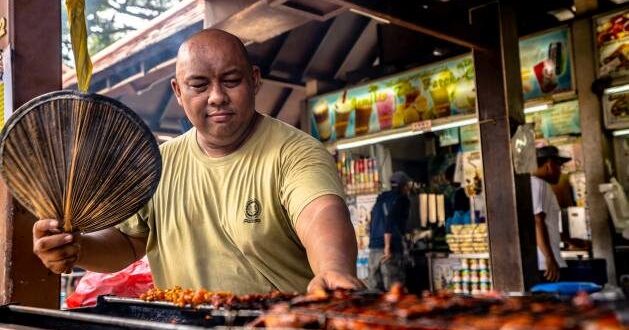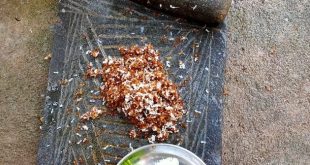PARIS, Dec 23 (IPS) – Delicacies fashioned a notable portion of the newest inscriptions on UNESCO’s Consultant Listing of the Intangible Cultural Heritage of Humanity, with hawker meals in Singapore and couscous traditions in North Africa being celebrated.
The 2 had been amongst 29 parts inscribed when the intergovernmental committee for the safeguarding of the world’s Intangible Cultural Heritage met nearly Dec. 14 to 19, hosted by Jamaica and chaired by the island’s Minister of Tradition, Gender, Leisure and Sport, Olivia “Babsy” Grange.
“This yr … the expertise that all of us had in sharing and experiencing the cultures of various nations made us understand that despite the pandemic, despite us being aside, we had been nonetheless in a position to share in one another’s tradition, and what it did for all of us was to convey us nearer collectively,” Grange stated on the finish of the assembly.
The inscription of Singapore’s “hawker tradition, neighborhood eating and culinary practices in a multicultural city context” marks the primary time that the Southeast Asian island state has a component inscribed on the Listing.
Hawker tradition is “current all through Singapore”, with these meals centres seen as a type of “neighborhood eating room”, officers stated. Right here, folks from various backgrounds dine and mingle, in an environment of conviviality and delight of the scents and flavours on supply.
Hawker centres grew out of street-food tradition, housing cooks who present meals in a bustling communal setting with completely different stalls. The centres have, nevertheless, seen closures and fewer prospects due to the Covid-19 pandemic, making the 2020 inscription a bitter-sweet one.
The couscous submission – which targeted on the information, know-how and practices pertaining to the manufacturing and consumption of the dish – was made by Algeria, Mauritania, Morocco and Tunisia, and it naturally sparked a web based debate in regards to the absence of different nations which can be identified for this meals, and about favorite recipes.
The inscription encompasses “the strategies of manufacturing, manufacturing situations and instruments, related artefacts and circumstances of couscous consumption within the communities involved,” based on UNESCO (the United Nations Academic, Scientific and Cultural Group).
Originating from the Berber tradition of Algeria and Morocco, couscous is now eaten around the globe, accompanied by a wide range of greens and meats – relying on the area, the season and the event.
It comes “replete with symbols, meanings and social and cultural dimensions linked to solidarity, conviviality and the sharing of meals,” UNESCO stated.
Meals was additionally not directly highlighted with the inscription of “Zlakusa pottery making, hand-wheel pottery making within the village of Zlakusa”. This includes the apply of creating unglazed meals vessels which can be utilized in households and eating places throughout Serbia, originating from a tiny village within the west of the nation.
Some gastronomes declare that dishes ready in Zlakusa earthenware have a singular style, and the pottery’s “shut affiliation with the village of Zlakusa and its environs displays its shut hyperlink with the pure setting,” the inscription said.
Away from meals, a number of music and artwork practices had been additionally inscribed, and the assembly noticed three parts added to the Listing of Intangible Cultural Heritage in Want of Pressing Safeguarding, whereas one other three had been added to the Register of Good Safeguarding Practices.
The latter “facilitates the sharing of profitable safeguarding experiences” and “showcases examples of the efficient transmission of residing cultural practices and information to future generations,” UNESCO stated. Components inscribed this yr embrace the Martinique yole (a lightweight boat), whose custom goes again a number of centuries within the Caribbean.
The committee said “spontaneous motion to safeguard these boats developed whereas they confronted the specter of disappearing” and that the safeguarding programme has grown through the years. The principle objective is to “protect the know-how of native boat builders”, transmit experience on crusing, and create a federation to arrange main occasions.
In a yr that has seen the cultural sector hit laborious globally by the Covid-19 pandemic, the inscriptions introduced some cheer to the 141 nations attending and the multiple thousand folks collaborating within the digital assembly. Throughout a web based press briefing on Dec. 18, committee chairperson Grange famous that Jamaica was in fact additionally affected by the well being disaster, however that the inhabitants was very “resilient”.
“It impacted points of our tradition, primarily the leisure trade, and likewise numerous sectors within the artistic trade,” she stated in response to a query. “It has impacted the economic system … and our artistic individuals who depend upon their artistic works to earn an revenue. Nevertheless, we had been nonetheless in a position to take our music to the world, by way of expertise.”
Grange stated that internet hosting the large digital assembly of the Intangible Cultural Heritage committee posed some technological challenges, however nothing that might not be overcome. She stated it confirmed the significance of working collectively, of sharing cultures, and of discovering methods to beat obstacles to “make sure that we proceed to make use of tradition to unite the world.”
This yr noticed the best variety of multi-country nominations – 14 inscriptions “testifying to the power of intangible cultural heritage to convey folks collectively and promote worldwide cooperation,” Grange stated.
“These are nice achievements for all of humanity,” she declared, recalling her nation’s pleasure and the worldwide celebration when reggae music of Jamaica was added to the Listing in 2018.
© Inter Press Service (2020) — All Rights ReservedOriginal source: Inter Press Service
 Top Naija News – Nigeria News, Nigerian News & Top Stories Top Naija News – Nigerian Newspapers, Nigerian News. topnaijanews is a daily Nigerian newspaper covering Latest News, Breaking News, Entertainment, Sports, Lifestyle and Politics.
Top Naija News – Nigeria News, Nigerian News & Top Stories Top Naija News – Nigerian Newspapers, Nigerian News. topnaijanews is a daily Nigerian newspaper covering Latest News, Breaking News, Entertainment, Sports, Lifestyle and Politics.




